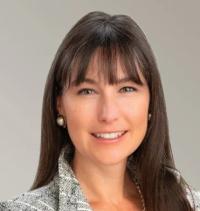The Blue Cross Blue Shield Association will lead an effort to improve maternity care in about 600 acute care and pediatric hospitals across the nation, including a push to address racial and ethnic disparities.
Health equity in maternal care will be added to the list of conditions that the insurer’s Blue Distinction Centers focus on, the company said in an announcement. The effectiveness of that care will be measured against industry standards. Blue Distinction Centers for Maternity Care comprise hospitals and other providers that the insurer deems deliver high quality care.
Though officially launched this month, the program has been in gestation for some years, Erin Barney, BCBSA’s vice president of network solutions, told Fierce Healthcare. In 2016, the organization expanded its Blue Distinction Specialty Care program to recognize acute care hospitals and pediatric hospitals that demonstrate expertise in delivering quality and affordable maternity care safely, effectively and cost-efficiently, according to company officials.
BCBSA continued adding and refining the quality metrics it created with the help of input from the American College of Obstetricians and Gynecologists, the Joint Commission and the Centers for Disease Control and Prevention. Company officials stress that they’ve always included equity measures health equity measures in their Blue Distinction Centers with metrics aimed at closing racial and ethnic care gaps. Those equity measures are now more stringent and more closely aligned with BCBSA’s Maternal Health Equity Actions and broader National Health Equity Strategy, BCBSA officials said.

“All of our Blues plans invited different facilities to apply for this designation, with that increased focus on how the facilities are addressing maternal health equity and other aspects critical to addressing maternal healthcare and improving it across our country,” Barney said.
The designated provider facilities met the health equity selection criteria, and outperformed national averages with 17% fewer cesarean births, 60% fewer elective deliveries and 26% fewer episiotomies.
BCBSA noted that black women are three times more likely to die from a pregnancy-related cause than white women.
“We started this multi-year national health equity strategy to really address our nation’s crisis in these racial health disparities,” Barney said. “We started with maternal health because the data paints this very unfortunate picture of what’s happening across the country, and specifically, black women are at a higher risk for pregnancy and birth complications.”
In maternal care, facilities are eligible for one of two levels of distinction. Blue Distinction Centers (BDCs) deliver quality care safely, the organization said.
Blue Distinction Centers+ also recognize facilities that average a 21% savings on maternity care. BDC+ facilities were evaluated on:
- How well they use evidence-based practices in responding effectively to obstetric emergencies.
- Whether they offer training on spotting unconscious bias.
- Integrating the participation of doulas into the maternity care teams.
- Keeping tabs on racial and ethnic language.
- Operating a program geared toward quality improvement.
- Staging drills and simulations of a range of obstetric emergencies.
- Demonstrating year-over-year improvement in the program’s selected criteria.
Both BDCs and BDC+ facilities must meet the above criteria, according to BCBSA.
“We raised the bar and in some of these measures,” Barney said. “So, for C-sections; you had to perform fewer C-sections in order to qualify.”
One of the criteria is partnering with one of the CDC’s Perinatal Quality Collaboratives, which the CDC describes as “state or multi-state networks of teams working to improve the quality of care for mothers and babies.”
"They exist in almost all the states across the country, and they play a really important role in supporting safe, equitable maternal healthcare and providing different maternity bundles and training programs," Barney said.
Doulas offer emotional and physical support to women giving birth thereby improving the overall birthing experience.
Drills allow the maternity team to practice emergency protocols. It helps members understand each other’s role and expectations, shows them where to get equipment and identifies procedures that achieve optimal outcomes.
“Maternity care providers have to be prepared for successful management of emergency situations like hemorrhage, severe hypertension and maternal cardiac arrest,” said Barney.
BCBSA invited about 3,000 providers to apply for the program, and about half did so. Regarding providers that didn’t quality, Barney said that “we have a process where we’re working with them or the plans and ‘OK, here are the areas where the criteria were not met. And here are some resources that are available to you if you’re interested in meeting the criteria.’”
Those hospitals can then reapply or go through an appeal process to achieve designation.
“This is a fluid, ongoing process,” said Barney. “We want improvement. We want to really address this overall need. So, we’re looking for ways to support that.”